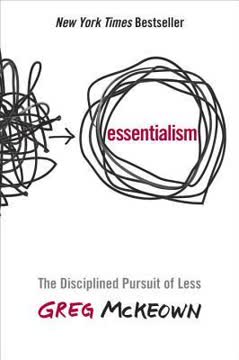つの重要なポイント
1. 評価せずに観察することで思いやりのあるコミュニケーションを育む
NVCの最初の要素は、観察と評価を分けることにある。
観察と評価の違い。 NVCは、私たちが観察することと、それをどのように解釈または判断するかを区別する重要性を強調している。このスキルにより、私たちはより明確にコミュニケーションを取り、他者からの防御的な反応の可能性を減らすことができる。
- 観察の例:
- 「シンクに汚れた皿がある」(観察)
- 「あなたは怠け者だ」(評価)
- 「報告書が締め切りの2日後に提出された」(観察)
- 「あなたは無責任だ」(評価)
具体的で観察可能な行動に焦点を当てることで、一般化や判断を避け、より生産的で思いやりのあるコミュニケーションの基盤を築くことができる。このアプローチは、防御的な反応を引き起こさず、真の対話と理解の扉を開くのに役立つ。
2. 感情を正確に特定し表現することで自己認識を高める
多くの人にとって、自分の感情を明確に表現することは難しい。
感情のリテラシー。 感情を表現するための豊かな語彙を発展させることは、効果的なコミュニケーションと自己認識にとって重要である。NVCは、「良い」や「悪い」といった曖昧な言葉を超えて、感情状態をより具体的に表現することを奨励している。
- ニーズが満たされたときの一般的な感情:
- 喜び、興奮、満足、安堵
- ニーズが満たされなかったときの一般的な感情:
- フラストレーション、不安、失望、悲しみ
感情を正確に特定し表現することで、私たちは内面的な経験により敏感になり、それを他者に伝える能力が向上する。この感情の明確さは、自己との深い結びつきを促進し、他者との共感と理解を育む。
3. 感情とニーズを結びつけて根本的な動機を理解する
すべての感情の根底にはニーズがある。
ニーズに基づく視点。 NVCは、すべての人間の行動が普遍的な人間のニーズを満たす試みであると主張している。感情をこれらの根本的なニーズに結びつけることで、私たちは自分自身や他者の動機を理解することができる。
普遍的なニーズの例:
- 身体的な健康(食事、住居、休息)
- 自律性(選択、自由、空間)
- つながり(愛、理解、尊重)
- 意味(目的、貢献、成長)
感情の背後にあるニーズを理解することで、私たちは自分の感情経験に責任を持ち、より効果的にコミュニケーションを取ることができる。他者を責める代わりに、自分のニーズを表現し、すべての人のニーズを満たす解決策を協力して見つけることができる。
4. 明確で前向きなリクエストを行い、生活を豊かにする
何を求めているかを表現し、何を求めていないかを表現しない。
前向きな行動言語。 NVCは、何を望んでいるかを明確で具体的にリクエストすることの重要性を強調している。このアプローチは、ニーズが満たされる可能性を高め、混乱や抵抗を減らす。
効果的なリクエストの要素:
- 現在形で前向きな言葉を使う
- 具体的で具体的な内容にする
- 観察可能な行動を求める
- 実行可能にする
例の変換:
- 効果がない: 「そんなに思いやりがないのをやめて!」
- 効果的: 「15分以上遅れる場合は、テキストメッセージを送ってもらえますか?」
リクエストを前向きで実行可能な言葉で表現することで、他者が私たちの幸福に貢献するための明確な道筋を作り、協力と相互理解を促進する。
5. 共感的な傾聴を実践してつながりを深める
共感は、私たちが存在する能力にある。
存在と理解。 共感的な傾聴は、他者のメッセージに完全に集中し、自分の考え、判断、解決策を提供したいという欲求を脇に置くことを含む。この深い傾聴は、言葉の背後にある感情とニーズに結びつくことを可能にする。
共感的な傾聴のステップ:
- 話し手に完全に注意を向ける
- 言葉だけでなく感情とニーズに焦点を当てる
- 理解を確認するために聞いたことを反映する
- 沈黙を許し、話し手のプロセスを尊重する
共感的な傾聴を実践することで、他者が自分自身を完全に表現できる安全な空間を作り、つながりと相互理解を深める。このスキルは、特に紛争解決や強い関係を築く際に価値がある。
6. 懲罰的な手段ではなく保護的な力を使用する
保護的な力の使用の意図は、罰することではなく、保護することである。
保護対罰。 NVCは、保護のための力の使用と罰のための力の使用を区別している。保護的な力は判断なしに害を防ぐことを目的とし、懲罰的な手段は認識された不正行為のために他者を苦しめることを目的としている。
保護的な力の特徴:
- 即時の安全に焦点を当てる
- 非難や判断を避ける
- 教育と理解を求める
- すべての当事者への尊重を維持する
懲罰的なアプローチから保護的なアプローチにシフトすることで、価値観を損なうことなく、関係を損なうことなく、困難な状況に対処することができる。この原則は、育児、教育、紛争解決に適用され、より思いやりのある効果的な方法を促進する。
7. 立場ではなくニーズに焦点を当てて紛争を解決する
つながりを作ると、問題は通常自動的に解決する。
ニーズに基づく紛争解決。 NVCは、紛争解決において、すべての当事者の根本的なニーズに焦点を当てることで、共通の立場を見つけ、創造的な解決策を見つけることができると主張している。
NVC紛争解決のステップ:
- すべての当事者の観察、感情、ニーズ、リクエストを特定する
- 各側の視点に共感する
- すべての人のニーズを満たす戦略を見つける
- 明確で実行可能なリクエストを行う
非難や固定された立場ではなくニーズに焦点を当てることで、紛争を相互理解と成長の機会に変えることができる。このアプローチは、個人的な関係から国際的な外交まで、さまざまな設定で成功を収めている。
8. 感謝を表現して祝う
感謝を表現して祝う。
真の感謝。 NVCは、他者が私たちの生活に与えたポジティブな影響を祝う方法で感謝を表現することを奨励している。賞賛を操作やコントロールの手段として使用するのではなく、真の感謝を表現する。
NVC感謝の要素:
- 幸福に貢献した具体的な行動
- 満たされたニーズ
- そのニーズが満たされたことによって生じた感情
例:
- 伝統的: 「あなたは素晴らしい友達だ。」
- NVC: 「昨日1時間私の話を聞いてくれたとき、私は安堵と支えられたと感じました。それは困難な時期に理解を求める私のニーズを満たしました。」
このように感謝を表現することで、他者とのつながりを深め、真の感謝と相互のケアの文化を育むことができる。
9. NVCを通じて文化的な条件付けから解放される
私たちは文化的な条件付けから解放されることができる。
自己認識と選択。 NVCは、私たちが文化から内面化した制限的な信念や行動を認識し、それを超越するのを助ける。条件反射的な反応に気づくことで、より生命を肯定する思考とコミュニケーションの方法を選択することができる。
検討すべき文化的条件付けの領域:
- 判断的な思考
- 責任の否認
- 要求とリクエストの違い
- 懲罰的アプローチと保護的アプローチ
NVCを実践することで、自己認識が高まり、文化的なプログラミングに基づく自動的な反応ではなく、意識的に反応を選択する能力が向上する。この解放は、自己および他者とのより真実で思いやりのある相互作用を可能にする。
10. 様々な文脈でNVCを適用して変革的な結果を得る
NVCは世界を変えることができる。もっと重要なのは、あなたの人生を変えることができる。
多用途な応用。 NVCの原則は、個人的な関係から職場環境、さらには国際的な紛争まで、さまざまな設定で適用することができる。その多用途性は、社会のあらゆるレベルでポジティブな変化をもたらす強力なツールとなる。
NVCの応用の文脈:
- 親密な関係
- 育児と教育
- 職場でのコミュニケーション
- セラピーとカウンセリング
- コミュニティビルディング
- 政治的対話と仲裁
NVCの原則をさまざまな生活の領域で一貫して適用することで、思いやりのあるコミュニケーションと理解の波及効果を生み出すことができる。このアプローチは、個々の生活を変革するだけでなく、より平和で共感的な世界への広範な社会変革にも貢献する可能性がある。
最終更新日:
FAQ
What's Nonviolent Communication: A Language of Life about?
- Compassionate Communication Focus: The book introduces Nonviolent Communication (NVC), a method developed by Marshall B. Rosenberg that emphasizes understanding and connection through compassionate dialogue.
- Four Key Components: NVC consists of observations, feelings, needs, and requests, which help individuals express themselves honestly and empathize with others.
- Transformative Impact: It illustrates how NVC can transform relationships by reducing conflict and enhancing empathy, offering practical tools for resolving disputes.
Why should I read Nonviolent Communication: A Language of Life?
- Improve Communication Skills: The book provides techniques to enhance interpersonal communication, making it easier to express needs and understand others.
- Promote Compassion: NVC encourages a compassionate approach, leading to deeper connections and reduced conflict, valuable in today's divisive climate.
- Versatile Application: Concepts are applicable in personal, educational, and professional contexts, making it a useful resource for improving interactions.
What are the key takeaways of Nonviolent Communication: A Language of Life?
- Empathy is Central: Understanding others' feelings and needs is crucial for effective dialogue and conflict resolution.
- Responsibility for Feelings: Readers learn to take responsibility for their own feelings and needs, leading to healthier relationships.
- Clear Requests: The book emphasizes making clear, actionable requests to foster cooperation and understanding.
What are the best quotes from Nonviolent Communication: A Language of Life and what do they mean?
- “Words are windows, or they’re walls.”: Highlights the power of language in shaping relationships, where compassionate communication opens connections.
- “People are disturbed not by things, but by the view they take of them.”: Emphasizes that perceptions shape emotional responses, encouraging responsibility for feelings.
- “When we are in contact with our feelings and needs, we humans no longer make good slaves and underlings.”: Speaks to empowerment through recognizing and expressing needs.
How does the NVC process work in practice?
- Observations: State what you observe without judgment, describing situations factually to avoid defensiveness.
- Feelings: Express how you feel about the observation, connecting emotionally to help others understand your perspective.
- Needs: Identify the needs connected to your feelings, shifting focus from blame to understanding what is important.
- Requests: Make a clear, specific request for action, allowing for constructive dialogue and cooperation.
How does Nonviolent Communication address conflict resolution?
- Empathy in Conflict: Emphasizes understanding the feelings and needs of all parties to find common ground and solutions.
- Transforming Criticism: Encourages expressing needs and making requests instead of criticizing, reducing defensiveness.
- Practical Mediation Steps: Provides steps for mediating conflicts, including empathic listening and articulating feelings and needs.
What role does empathy play in Nonviolent Communication: A Language of Life?
- Foundation of Connection: Empathy is the cornerstone of NVC, enabling deeper connections and understanding.
- Defusing Conflict: Empathizing with others can defuse potential conflicts, focusing on mutual understanding.
- Self-Empathy: Recognizing and validating one's own feelings and needs enhances emotional well-being and self-acceptance.
How can I apply the principles of NVC in my daily life?
- Practice Active Listening: Focus on hearing others' feelings and needs, enhancing empathy and understanding in conversations.
- Express Yourself Clearly: Use the four components of NVC to articulate your feelings and needs, fostering compassionate responses.
- Make Conscious Requests: Frame requests positively and specifically, encouraging cooperation and reducing perceived demands.
How does Nonviolent Communication suggest overcoming the fear of expressing needs?
- Value of Needs: Recognize that expressing needs is natural and essential, reducing fear associated with vulnerability.
- Practice Self-Empathy: Become comfortable with your own needs through self-empathy, empowering confident expression.
- Start Small: Begin with manageable requests to build confidence, gradually addressing more significant issues.
What are some common barriers to effective communication discussed in Nonviolent Communication?
- Moralistic Judgments: Identifies judgments as barriers, where statements like “You are selfish” alienate others.
- Denial of Responsibility: Many attribute feelings to others’ actions, leading to blame and conflict.
- Comparisons and Labels: Using comparisons or labels creates divisions, hindering productive dialogue.
How does Nonviolent Communication address anger and conflict?
- Understanding Anger: Teaches that anger results from unmet needs and judgments, transforming it into constructive dialogue.
- Expressing Anger Constructively: Focuses on feelings and needs rather than blame, encouraging open communication.
- Conflict Resolution Framework: Emphasizes empathy and understanding, fostering collaboration and mutual respect.
How can I cultivate self-compassion through NVC?
- Recognize Self-Judgments: Identify and challenge negative self-talk, developing a compassionate inner dialogue.
- Practice Self-Empathy: Acknowledge your feelings and needs, validating experiences and fostering self-acceptance.
- Shift Focus to Needs: Focus on unmet needs instead of mistakes, leading to a constructive perspective on growth.
レビュー
本書『非暴力コミュニケーション』は、主に肯定的な評価を受けており、読者はコミュニケーションの改善や紛争解決に役立つ実践的なアプローチを称賛している。多くの人々は、この本が人生を変えるものであり、感情やニーズを効果的に表現するための貴重な洞察を提供していると感じている。一部の読者は、その繰り返しや操作の可能性について批判しているが、多くの読者は、数多くの実例や練習問題が提供されている点を評価している。言語が最初はぎこちないと感じる人もいるが、多くの人々がさまざまな関係においてこの技術をうまく応用していると報告している。数人のレビュアーは、本書が体系的な不正を解決するための適用性について懸念を表明している。
Similar Books

















